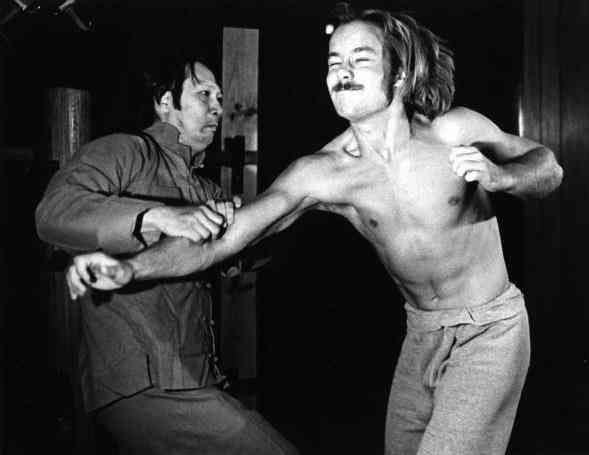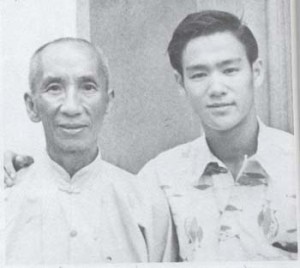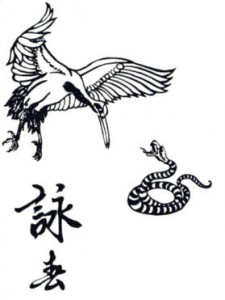 Wing Chun (詠春), also romanized as Ving Tsun or Wing Tsun, is a martial art style generally regarded as one of the most efficient combat self-defense systems available. It is a no nonsense form of Chinese Kung Fu (功夫) that assumes no quarter and has no rules, rituals, or flashy movements. It is noted for its simple, direct, and effective techniques that are applied simultaneously in combination for attack and defense. Wing Chun uses the minimum amount of energy to achieve the maximum amount of damage in the shortest amount of time– making Wing Chun an ideal art for self-defense.
Wing Chun (詠春), also romanized as Ving Tsun or Wing Tsun, is a martial art style generally regarded as one of the most efficient combat self-defense systems available. It is a no nonsense form of Chinese Kung Fu (功夫) that assumes no quarter and has no rules, rituals, or flashy movements. It is noted for its simple, direct, and effective techniques that are applied simultaneously in combination for attack and defense. Wing Chun uses the minimum amount of energy to achieve the maximum amount of damage in the shortest amount of time– making Wing Chun an ideal art for self-defense.
However, the art of Wing Chun extends beyond simply self-defense. It embodies the full spirit of martial arts and Kung Fu, training the trinity of body, mind, and spirit. Not surprisingly, Wing Chun can easily influence aspects of a student’s daily life. Most importantly, the concepts and philosophies learned through training Wing Chun can help students find new ways of seeing and solving everyday challenges.
Unlike traditional Kung Fu systems with numerous forms (or katas) simulating fighting situations, the Wing Chun system was designed with a minimal set of forms, each teaching a set of concepts and ideas.
Origins
The Legend of Wing Chun has it that a Nun from the Shaolin Temple, Ng Mui (五枚師太), witnessed a fight between a crane and a snake and noted that neither animal used brute force in the confrontation. The fight inspired her to create a new system of fighting based on the concepts she had witnessed being used by the two animals. When the Southern Shaolin Temple was attacked and destroyed, Ng Mui was one of the legendary Five Elders that survived the destruction. She later taught a young girl by the name of Yim Wing Chun (嚴詠春) this system of self defense because a local thug was threatening Yim Wing Chun to force her to marry him. As a result Yim Wing Chun was able to defend herself with the boxing methods taught to her and later marry whomever she chose. She thereafter marries Leung Bok Chau (梁博儔) and teaches him the style, which he names after her.
Bruce Lee Connection
 Wing Chun is the only fighting art that Bruce Lee ever formally studied. It is the skills that he learned in Wing Chun that catapulted him to stardom in the martial arts world. Wing Chun formed the core of his Jun Fan/Jeet Kune Do. He stated on several occasions after creating JKD that he would use Wing Chun if he were in a fight for his life.
Wing Chun is the only fighting art that Bruce Lee ever formally studied. It is the skills that he learned in Wing Chun that catapulted him to stardom in the martial arts world. Wing Chun formed the core of his Jun Fan/Jeet Kune Do. He stated on several occasions after creating JKD that he would use Wing Chun if he were in a fight for his life.
Bruce Lee’s teacher in Wing Chun was Master Yip Man. Bruce Lee introduced his close childhood friend, Duncan S.H. Leung to learn the fighting art of Wing Chun from Yip Man. Master Yip Man taught Duncan S.H. Leung as a closed door student and formal disciple. SiFu Leung taught Robert “Doc” Savage. SiFu Savage taught SiFu James Sasitorn as a closed door student and formal disciple.
____________________________________________________________________________________________
An Article From Martialdevelopement.com
Robbie Lawler’s Ruthless Wing Chun
Tags: EliteXC, MMA (Mixed Martial Arts), rules, self-defense, Wing Chun
I’ve always known that, sooner or later, the Chinese art of Wing Chun Kuen would be represented in a professional mixed martial arts bout. I just didn’t expect to see it in MMA’s historic prime-time debut.

Robbie Lawler
On May 31, 2008, “Ruthless” Robbie Lawler forever settled any reasonable doubts about Wing Chun’s viability in real combat. And he did it by accident.
Robbie Lawler faced Scott “Hands of Steel” Smith in the inaugural broadcast of CBS’ Saturday Night Fights. During the first two rounds of this title bout, both men fought according to New Jersey’s Unified Rules of Mixed Martial Arts: no headbutts, biting, groin attacks, or rabbit punches; no hair-pulling or small joint manipulation; no fish-hooking or strikes to the trachea.
For more than ten minutes, Lawler and Smith used their training in boxing, Muay Thai, wrestling and BJJ to soften each other up. Neither fighter held a clear advantage, and so the exchange continued. Then “Ruthless” Lawler stuck his fingers in Smith’s eye.
Referee Dan Miragliotta halted the fight immediately. Scott “Hands of Steel” Smith hoped to continue after a five-minute rest to regain his vision, but the doctor forbid it. The match was called: no contest.
Lawler’s eye poke, unintentional though it was, ended the bout in seconds. There is little doubt in my mind that, if the referee had allowed it, Lawler could have followed up with an uncontested knockout.

Robbie Lawler fingers Scott Smith in round 3
Ring Fighting vs. Real-World Self-Defense
As a professional fighter, Scott Smith followed the match rules, and he was reasonable to assume that Robbie Lawler would do the same. However, it would also be reasonable to assume that, in a five-round fight with fingerless gloves, a stray finger could land in your eye, and to defend against such an accident.
If only such a thing were possible. The eyes are the most sensitive area on the body, and especially difficult to protect. If the opponent can so much as touch your eyes, they can damage them permanently, so the threat demands a conservative game. (The same principle applies, to a lesser degree, to defending the throat and genitals.)
Effective defense of vital areas cannot be an afterthought; it must be integrated into a fighting strategy from the outset, and supported by coherent tactics. The approach must be conservative, but also vicious, in order to eliminate the threat as rapidly as possible.
Does any of this sound familiar? These are the precepts of Wing Chun Kuen, Bruce Lee’s original martial art. Wing Chun starts where MMA ends; it is brutal and direct. Rules, community standards, and basic human decency prevent it from being fully applied in the competitive arena, but as Robbie Lawler reminded us yesterday, the ruthless hands of Wing Chun should not be discounted.
